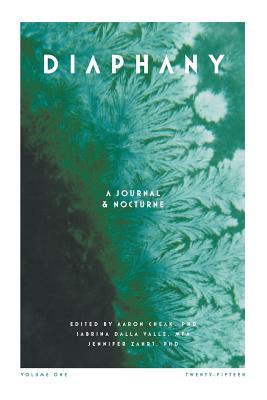DIAPHANY is an international peer-reviewed volume dedicated to the living confluence of poetic, phenomenological and empirical perceptions of reality. Drinking deeply from both the arts and the sciences, and then dissolving their boundaries, Diaphany weds the vital, experiential dimension of reality to rigorous, source-based research. By embracing the principle of qualitative presence, Diaphany seeks to breathe life into the academic logos in a way that infuses philosophical gravitas with a sweeping, visionary leaven.
The concept of diaphany is drawn from the work of German poet andKulturphilosoph, Jean Gebser. For Gebser, transparency (Durchsichtigkeit) is that which renders both darkness and light present. Diaphany is designed accordingly as both a journal (from French jour, 'day') and a nocturne--a hymn to the night. Diaphany thus conceived is a matrix not only for the rational structures of consciousness (wakeful logos and light) but also for the pre-rational structures of consciousness (myth, dream, darkness). In synthesising Enlightenment as well as Romantik streams of culture, Diaphany seeks to render both sides of the human experience more integrally present.
While strictly peer-reviewed, and while upholding the highest standards of academic research--including an unwavering fidelity to source materials--Diaphany is not a conventional academic journal. That is, Diaphany is not interested in so-called 'objective', 'dispassionate', or 'impersonal' inquiry for its own sake. Rather, Diaphany seeks philosophers tempered in the fires of genuine wisdom rather than mere information; scientists whose work emerges as much from a fervent, personal quest as it does from the perception of inexorable, impersonal realities; and artists of poēsis and presence who make the invisible visible and the eternal tangible according to a Kandinskian 'inner necessity' (innere Notwendigkeit).
